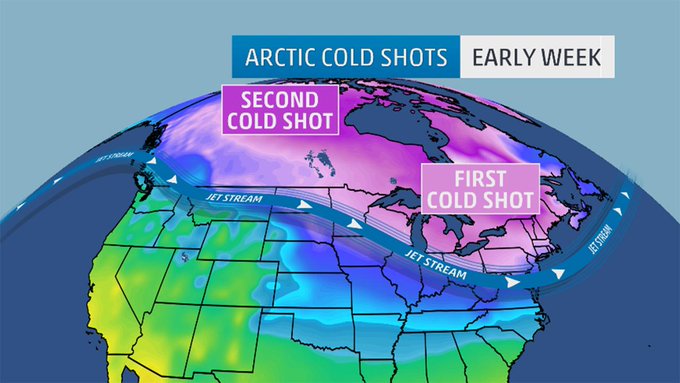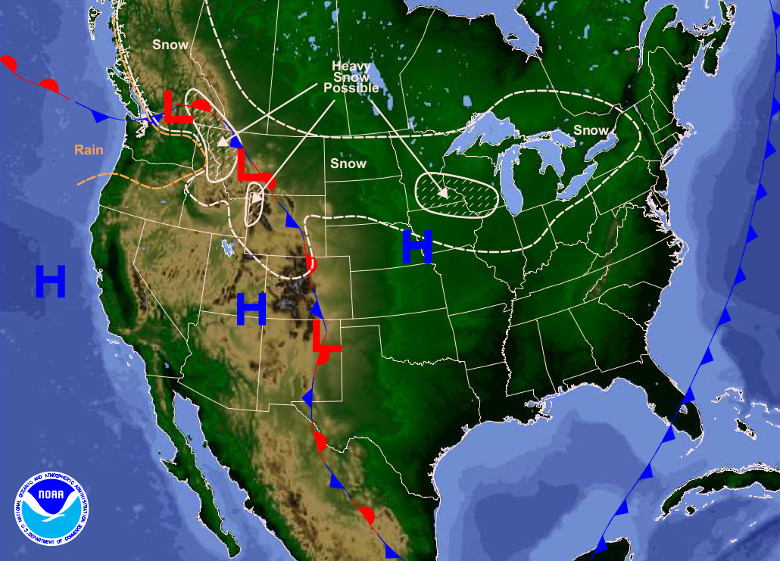
Weather Forecast for Monday, Jan. 5, 2015. (National Weather Service)
Following something of a warm winter in much of the nation, winter will hit several regions hard this week, with widespread precipitation over the weekend and plunging temperatures as the week begins.
Here’s what you need to know:
1. It Starts With Snow and Ice Across Half of the Nation
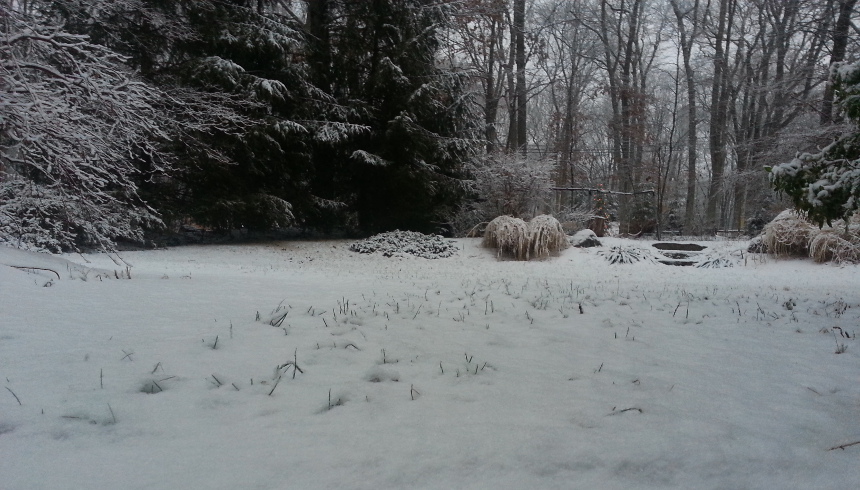
The snowfall in Connecticut began at approximately 3 p.m., with as much as an inch of buildup in the southern part of the state by 5 p.m.
Snow and ice began to fall across much of the nation Saturday. Several inches of snow are expected in the Oklahoma Panhandle while the Berkshires in New England could see an accumulation of a quarter-inch of ice.
The snow has already caused travel delays and airline cancellations. For example, by mid-day 45 flights out of Chicago’s O’Hare had been cancelled. As a result of precipitation in the midwest, coast-to-coast flights with connections have been cancelled or delayed.
A blizzard warning has been issued in northern North Dakota and Minnesota, where winds reached 40 miles per hour amid a driving snow.
According to the National Weather Service:
“A storm system will produce a variety of hazardous weather as it moves from the lower Mississippi Valley towards the Great Lakes this weekend. A swath of wintry precipitation is forecast from the Plains to the Great Lakes and mid-Atlantic today, while severe storms and heavy rain are possible in parts of the Gulf Coast into the mid-south.”
2. Windchills Will Reach 50 Below

Map showing temperature change over the last 24-hours. (National Weather Service)
Temperatures in Minnesota will dip as low as 20 below this weekend, with windchills making that feel like 50 below in parts of the nation.
Chicago is expected to see a high below zero by midweek — the area could see record low temperatures — and New York will see single digits, with temperatures barely reaching 35 degrees much of the time between Monday and Sunday, according to The Weather Channel.
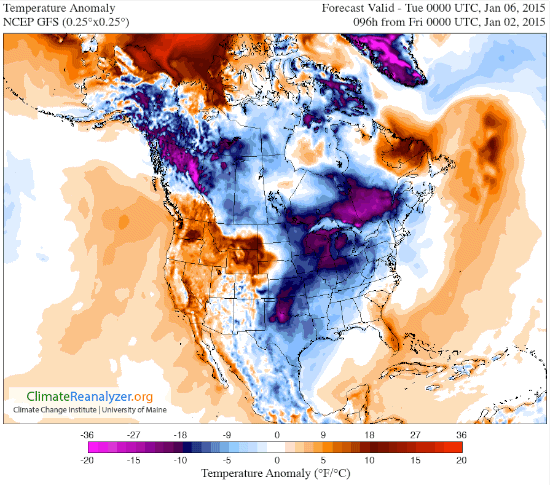
The Boston area could also see record low temperatures and most likely the coldest weather this year. To date, the coldest temperature in the region this year was 18 degrees, on December 8.
3. The Cold Will Come in Two Waves
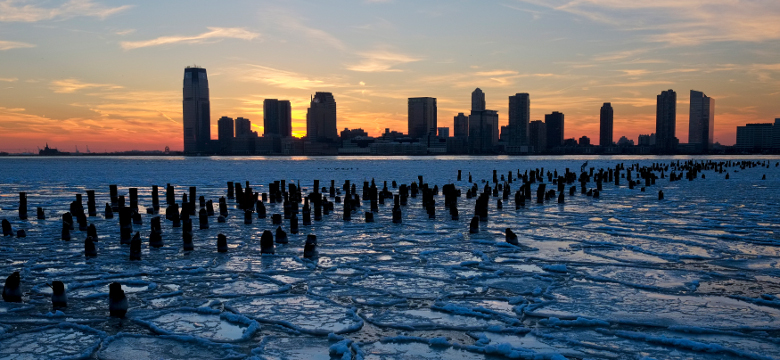
Ice floes fill the Hudson River as the New Jersey waterfront is seen during sunset on January 9, 2014 in New York City. (Afton Almaraz/Getty Images)
Temperatures dipped quite a bit at the end of 2014, but forecasters are expecting a two-wave cold front that could keep the mercury lower, for longer.
The storm dubbed “Frona” by The Weather Channel, currently blasting snow on much of the north- and mid-west, will bring cold weather behind it. After that, a high-pressure system in the West allows arctic air to move south across the U.S., particularly in the East.
Comparisons are already being made to the “polar vortex” of January, 2014, that brought record low temps to much of the U.S.
4. The South Will Feel the Chill
With snow already blowing on the Oklahoma panhandle, forecasters see temperatures well below normal for much of the south. According to The Weather Channel, “High temperatures will be up to 25 degrees below average and will not reach above the freezing mark as far south as Oklahoma and the Texas Panhandle.”
Atlanta cold see highs in the teens by Thursday, which looks to be the coldest day yet this year for much of the South, from Nashville to the coast. Tennessee saw some cold weather in November, but temperatures this week are expected to drop well below the 18-degrees the Nashville residents saw back then.
5. This Ends a Warm Winter
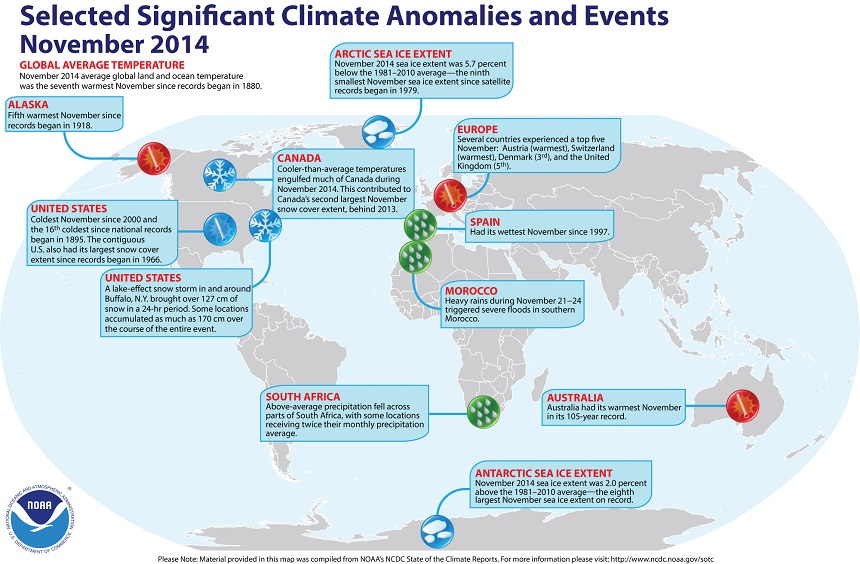
November 2014, was the seventh warmest on record, globally. (National Weather Service)
Florida saw record warm temperature records this year so far, and November in particular was one of the warmest months on record.
According to the National Weather Service:
“The combined average temperature over global land and ocean surfaces during November tied with 2008 as the seventh highest for the month.”
That being said, on a national scale, temperatures were mixed — some colder-than-average weather in the East with the warmest winter on record in other parts of the country.
When December rolled around, though, the warmth increased. As The Weather Channel reported, “more than 2,400 record highs were broken in the first half of December as a spell of unusually balmy weather overtook a large part of the United States.”


